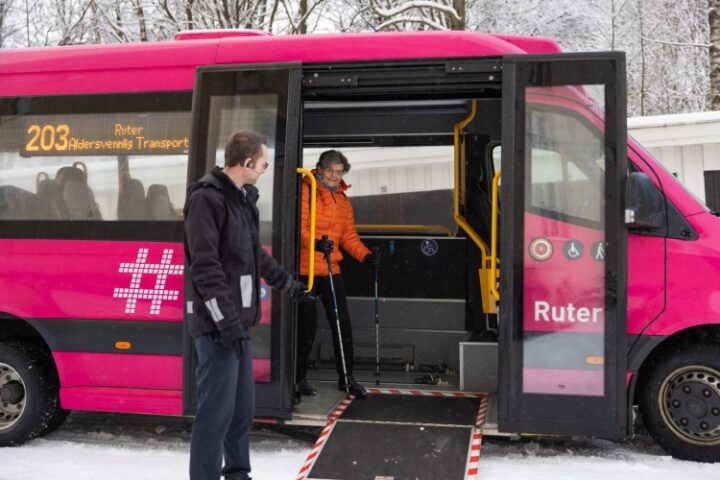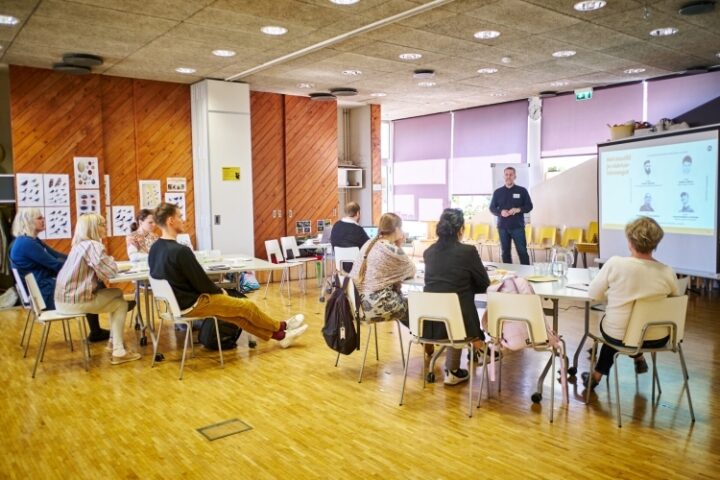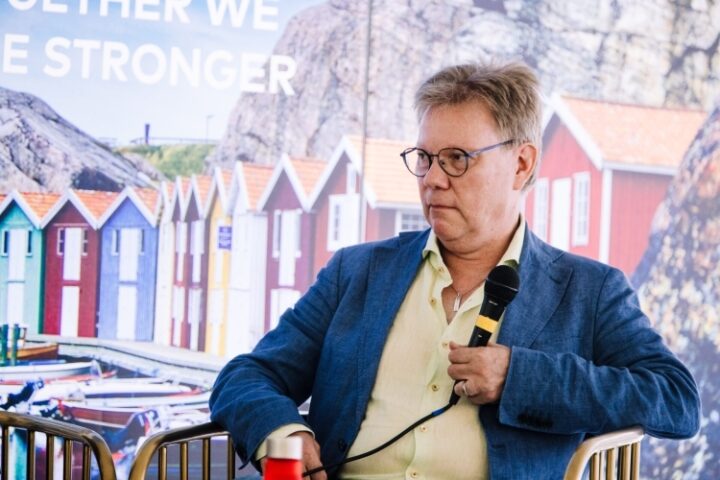Carbon neutrality – scam or clever marketing gimmick?
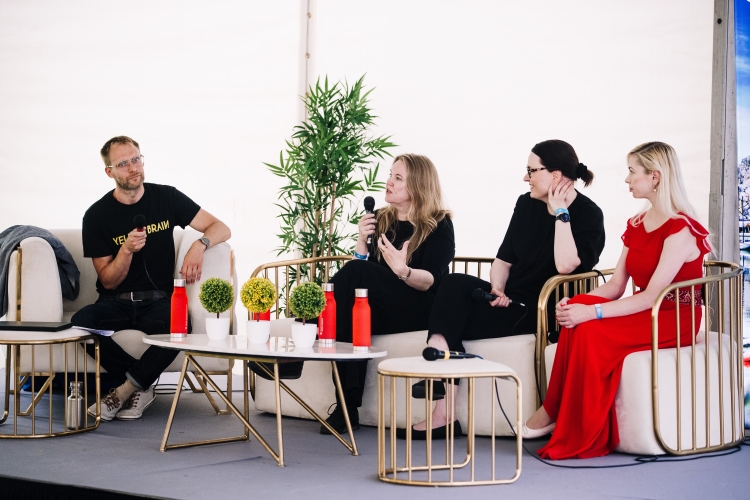
If you have ever flown somewhere, had a parcel delivered to your home or ordered food, you have likely noticed the accompanying proud claim about the service or goods being carbon neutral. Are companies who claim this indeed striving for a more sustainable future or is it just a marketing ploy and greenwashing? Experts from Estonia and Finland delved into this topic at the Opinion Festival.
On 11 August, climate scientist Annela Anger-Kraavi, Adviser on Green Reform to the Ministry of Climate Aire Rihe and Director of Sustainability Consulting and Communications at Miltton Finland Eeva Taimisto discussed how greenwashing takes a toll on green transition at the Opinion Festival in Paide. The discussion was moderated by Madis Tilga, Adviser on Bioeconomy to the Nordic Council of Ministers Office in Estonia.
A study published by the European Commission a few years ago revealed that around 50% of sustainability claims by companies are either misleading or completely false. This number is quite startling and, according to Madis Tilga, creates a breeding ground for mistrust. “This is illustrated by a survey conducted in the U.S., which showed that more than 80% of Gen Z consumers don’t trust green claims made by brands. This is a big problem, because this mistrust spills over to the whole economic sector and undermines the green transition as a whole,” Tilga said.
If mistrust is so high, but companies still claim that their activities or services are carbon neutral, what is the truth? What does it mean exactly when they claim to be carbon neutral, carbon negative or carbon positive?
“This is where we really need to take a step back and talk about climate change. What is it in the first place? It is caused by burning fossil fuels, which releases CO2 into the atmosphere. This is an invisible problem that we have to address,” said Anger-Kraavi. She added that when talking about carbon neutrality, everything is theoretically possible, but in practice it is often difficult to achieve given the way the economy works. “Even if you plant X trees, how sure can you be that climate change won’t affect those same trees?” Anger-Kraavi provided an example.
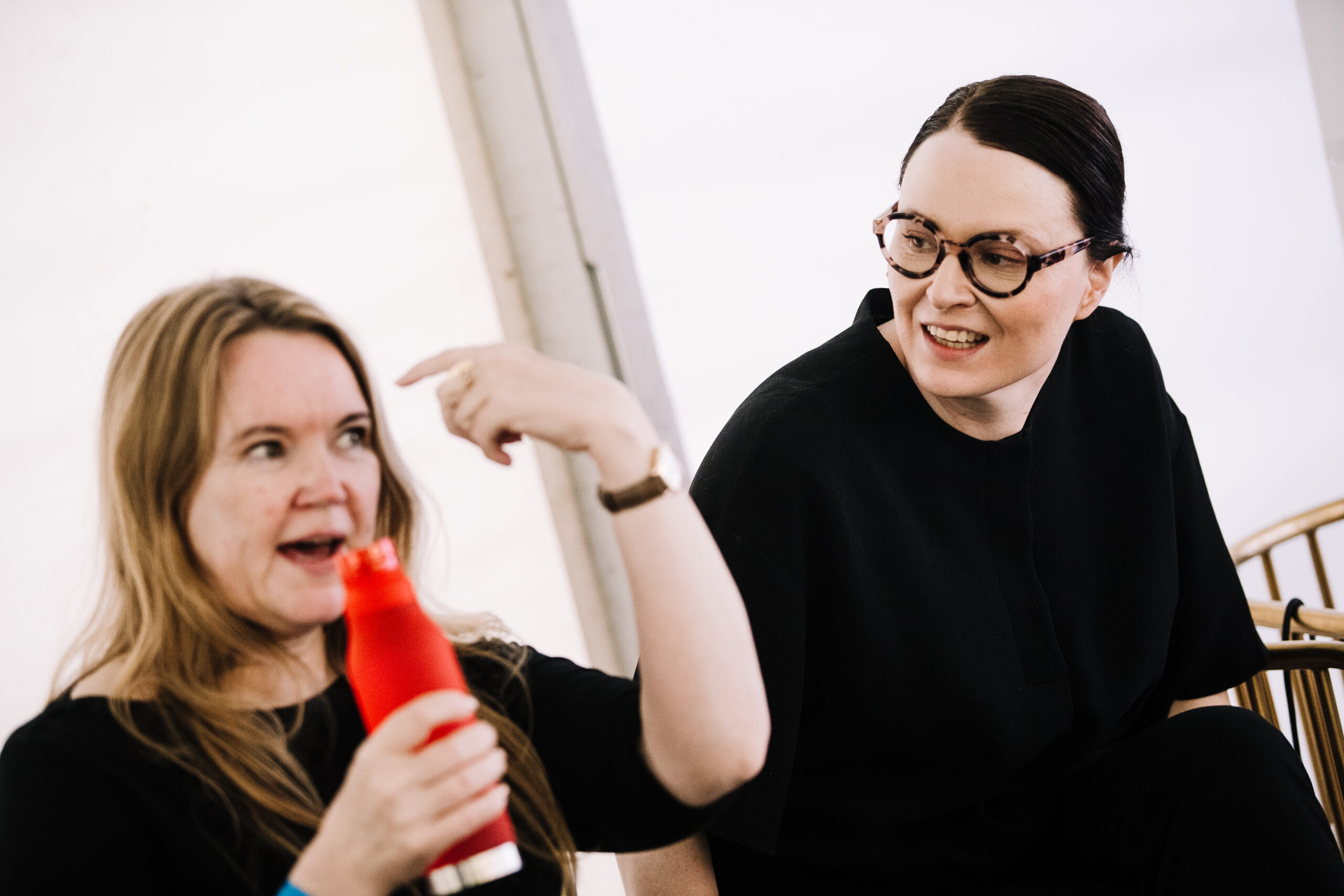
Web of lies, i.e. greenwashing
In the context of climate change and CO2, it is also important to talk about greenwashing. “Greenwashing is when you claim that your product is carbon neutral and it’s not actually true. Since we as consumers cannot verify this, we have to trust the producers,” Anger-Kraavi gave a simple example.
Greenwashing may be aimed at achieving a positive image, attracting consumers or investors and creating an impression of responsibility and environmental protection. At the same time, the company avoids taking practical steps to ensure environmental sustainability. As a result, consumers, investors or the public may believe that they are supporting an environmentally friendly company or initiative, when in reality their actions may have minimal impact on the environment or even harm it.
Taimisto highlighted another trend in greenwashing that can be observed in many companies. “In greenwashing lingo, this is called selective disclosure or hidden trade-offs, which means that some of the claims a company makes are true, but some are false,” Taimisto explained.
She gave an example from about 15 years ago when she started working in the field of sustainability communication and reporting. “I remember international mining companies talking a lot about community involvement and community investment. For example, how they support local schools, residents, football clubs, etc. However, they didn’t say a word about biodiversity. We know that mines have a very significant impact on biodiversity, but you couldn’t find a word about this in their reports or on their websites.”
Taimisto admitted that it is still happening in many places today, but both companies and customers have become more cautious and the level of understanding is higher than 15 years ago. “It still happens, but it’s a bit more sophisticated – they talk about things that they have in order and they just don’t mention the rest.”
Taimisto suggested that those more interested in the topic should type ‘Greenwashing Awards’ into Google and read more about the cases that have been made public around the world. “A good example of a greenwashing case was the 2022 Qatar FIFA World Cup. The organisers of the event claimed it was carbon neutral, but the methodology used to calculate it raised suspicions among many. In the end, it turned out to be greenwashing,” Taimisto said, adding that sustainability communication used there was definitely not one of her favourites.
Anger-Kraavi gave the example of a company in Tallinn that claims to be carbon neutral but flew its entire team to Italy for a month to work remotely. “This is a model example of hidden greenwashing,” she explained.
How to greenwash?
When Aire Rihe mentioned that she was going to talk about greenwashing at the Opinion Festival, many friends asked her about how to do it. “Let’s take lip balm as an example. You dye it green and add that it contains 1% algae. That is to say, you claim that it is a very green and environmentally friendly product. Actually, it’s pure greenwashing.”
As another example, Rihe mentioned the recent meeting of the UN Environment Assembly, which brings together environment ministers from all of the world. She considers what happened there greenwashing of the highest level, as the meeting is used to make decisions about the future of the environment globally and by consensus. One of the main topics of the meeting was plastics and related environmental issues. “Iran argued that plastics are not a problem. They said that plastics are actually the way to sustainability because they help us so much. Basically, one country tried to greenwash at the highest level,” said Rihe.
She added that the problem needs to be discussed, because in the current case we are fooling ourselves and if greenwashing continues, we will not achieve the goals set for 2030. “If anyone claims to be doing something sustainable and ‘green’ in the future, they must prove it by methods that have been established on the basis of very strict rules,” said Rihe.
According to Taimisto, things are still moving in the right direction. “The Corporate Sustainability Reporting Directive gives companies stricter guidelines on data points and these reports need to be audited by third parties. In addition, sustainability data will be treated as seriously as financial data,” explained Taimisto.
Not everyone can use ecolabels in the future
Additionally, products that reach the end user, i.e. products labelled ‘eco’ sold in supermarkets etc., will be more strictly checked and regulated. “This must be verified by third parties and scientifically proven. You can no longer simply say that you are an environmentally friendly producer. You need to specify the way in which you are environmentally friendly and the information that supports it must be easily available,” Taimisto said, citing examples of positive changes that will take place in the near future and remove the current confusion.
https://www.norden.ee/galeriid/arvamusfestival-2023/
Think before you consume!
According to Rihe, it is important to be clear about definitions when talking about terms. For example, we can talk about the UN resolution on nature-based solutions, which is aimed at preventing greenwashing. Many major companies use words like ‘nature-based’ etc., but in reality they are destroying nature in the process of production, taking things from nature while hindering its development. Therefore, a definition had to be agreed.
“The European Union has now defined environmental sustainability, which means that you cannot undermine any of the six environmental and climate objectives. These are climate change mitigation, CO2 reduction, water and marine management, but also protection of biodiversity and circular economy. You cannot harm any of these six objectives if you wish to claim that the production of one company or another is sustainable,” Rihe explained.
She gave the example of the textile sector, which is the second most polluting in the world. An average EU citizen wears 26 kilograms of new textiles a year, but it takes three kilograms of chemicals to produce one kilogram of textile. “Here, the question is whether the chemicals remain in Bangladesh or somewhere else or whether I’m actually wearing them.” Rihe noted that some major clothing companies highlight their sustainability by saying that they take used clothes back, but they are actually still using these chemicals.
“The European Commission did not want to work on this issue for many years because it is very delicate. Now they have presented a regulation and each country has to establish a framework to regulate CO2 offsetting and contribute to monitoring, with certain authorities overseeing the market, which currently looks like the Wild West,” Rihe explained.
Intentional scam or hasty enthusiasm?
How can the end customer tell that they are being deceived and recognise greenwashing? In general, it is quite difficult for consumers to decide what is true and what is false.
“Based on the experience of the Ministry of Climate, we created a climate calculator, which can be found on our website. This can be used to check, for example, which fuel to use when driving, which type of electricity to use or how to sort waste,” Rihe explained. The model for calculating the greenhouse gas footprint was completed last year in cooperation with scientists.
She added that this will have a very clear impact on CO2 emissions, but it should be borne in mind that the calculator is unofficial and this is where the state has to contribute a little. Still, creating such tools helps to increase trustworthiness at least in some stages. However, Rihe admitted that she does not know how end users could see clearly who deceives them and who does not.
“I would like to offer a completely different perspective. Yes, it’s difficult for consumers to understand all of these things, but also for company employees who are not sustainability experts or environmental engineers or scientists,” Taimisto explained.
Only recently, Taimisto was asked whether she thinks that greenwashing works because marketing people lie and deceive customers. “I’ve never seen them do it just to pull wool over customers’ eyes. Instead, what happens is that a company’s sales or marketing director wants to get a product to market quickly. The marketing department is then forwarded information that it’s much more sustainable than a competitor’s product or service or whatever. Then the marketer gets creative, and that is why we see a ‘green’ end result on the market,” Taimisto explained, adding that it is done out of good faith rather than ill will.
Anger-Kraav, however, put forward the idea that the best way for all of us to make environmentally friendly decisions is to consume only when it is absolutely necessary and promote reuse.
The 90-minute discussion also touched upon greenwashing schemes and solutions that are needed from the perspective of sustainability.
Watch a recording of the discussion here:
